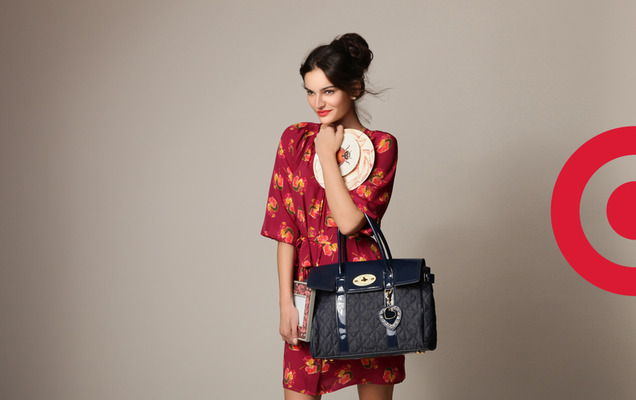Will Luxury Brand-Retailer Co-Branding Strategy Work in Indonesia?

By: Primidya K. Miranda Soesilo, S.E., M.Sc., Ph.D.
In the U.S. market, it is not unusual to see that certain luxury brands co-brand with lower class retailers. For example, Anya Hindmarch, a London-based luxury handbag designer, had made an agreement with Target, second leading retailers in the U.S., to co-brand by offering limited edition of “Anya Hindmarch for Target” line. Anya Hindmarch is not the only one – Mulberry (UK) and Missoni (Italy) had taken the same route. From the retailers perspective, Target is not the only one, as well. H&M had collaborated with Karl Lagerfeld and Versace. The difference between the two retailers is that Target is categorized as Superstore (i.e. selling various product categories, ranging from household appliances, to clothing, to camping necessities, to vegetables and produce) while H&M is more of a clothing retailer. Thus, one might say that Karl Lagerfeld’s decision to collaborate with H&M is more ‘acceptable’ or ‘in line’ than Mulberry’s decision to co-brand with Target. Regardless, this kind of co-branding strategy is often pursued by luxury brands in the U.S. market to make their products more accessible and affordable to potential customers. Luxury brands often design mass-market versions of their runway designs for sale in department or specialty clothing stores. Therefore, the decision to co-brand with selected retailers can be seen as natural extension of this strategy.
Different motives drive luxury brands and retailers to pursue this pathway. For the luxury brands, the motives could be that the luxury brand would have the opportunity to tap into wider segment, making connection with future potential customers; while for the retailers, obviously this move would provide an opportunity to increase revenue. This is logical if the selected retailers share similarity in terms of perceived image. But what if the selected retailers are of lower end class? What if the type of retail business does not fit with the luxury brands line? Well, apparently it has been proven to be successful in the U.S. market – at least for the retailer in collaboration as indicated by the ‘sold out’ sign. Will the success be extended beyond geographic and cultural boundaries? Will it work in Indonesia? These questions emerge as we see that luxury brand-retailer co-branding has rarely been seen in developing countries, despite the fact that the luxury market growth rate exceeds 20% due to the emergence of affluent customers and social status seekers with higher disposable personal income, as reflected in Asian market.
While the market may operate similarly, the behavior of American and Indonesian consumers is definitely not twins. Culturally, these two consumer groups are very much different. For example, Indonesians are collectivists, while Americans are individualists; Indonesia’s society is more hierarchical than the U.S. society, reflecting higher power distance, in Hofstede’s dimension. These differences may affect the way consumers in both market view brands and the consumption of them. Individuals in hierarchical society show their social status by devoting larger shares of their expenditures to expensive visible goods. Global brands are seen as a symbol of success and power, especially in hierarchical societies. Therefore, any co-branding strategies may dilute the premium characteristic of the luxury brand, leading to negative feedback on the luxury brand. We may expect this is to be true in Indonesia.
Recently, I conducted a research with colleagues from City University of New York at Staten Island, and West Chester University, of the impact of luxury brand-retailer co-branding strategy on customers in both Indonesia and the U.S. The study has been published in the Journal of International Consumer Marketing, in May 2015, with the title of “Impact of Luxury Brand Retailer Co-Branding Strategy on Potential Customers: A Cross-Cultural Study”. This study examines how consumers from two different cultures (the U.S. and Indonesia) react to the luxury brand retailer co-branding strategy. Indonesia was chosen as the counterpart of the U.S. market not only because it represents the East Asian cultures, but also that it is projected to become the biggest market for luxury goods in Southeast Asia, according to Jakarta Globe. As questioned earlier, will this strategy be accepted positively by the Indonesian consumers? To examine the effect, we conducted an experimental research in which consumers from two different cultures were presented with a scenario about a co-branding activity between the luxury brand and a hypothetical retailer. We used real luxury brand names in the experiments, but chose to use hypothetical retailer. To give an idea of what retailer it is to respondents, we provided a description of the retailer and post a picture of the interior and layout of the retailer along. Next, we presented respondents with a ‘newspaper-like’ announcement about plan by luxury brand to collaborate with this particular retailer. Later, we measured consumers’ responses in the form of: (1) attitudes toward the resulting co-brand (e.g. Mulberry for Target), and (2) attitude change toward the original luxury brand. In addition to cultural differences (i.e. consumers of the two different countries) We took into account three independent variables: brand familiarity, product fit, and brand fit. Brand familiarity measures how familiar customers are with the chosen brand. Product fit refers to the relatedness between product categories that a retailer carries in its store and the fashion industry that the luxury brand is in. If a retailer sells broad product categories (e.g., fashion goods, electronics, office supply, etc.), the product fit is defined as low. By contrast, if a retailer carries only fashion goods, its product fit with the luxury brand would be defined as high. Brand fit specifically refers to the relatedness between the retailer’s store image and the luxury brand’s high-end image. If a retailer is low class, the brand fit is defined as low. By contrast, if a retailer has a high-end image, its brand fit with the luxury brand would be defined as high.
Through this study, we made contributions with respect to consumer attitudes toward the luxury brand retailer co-brand as well as attitude change toward the luxury brand, especially to our understanding of cross-cultural differences in these attitudes. Our theoretical findings also suggested several important managerial implications for luxury brand co-branding decision making. With respect to attitudes toward the resulting co-brand, our findings demonstrated that as expected, brand familiarity did not influence attitudes toward the co-brand in either the U.S. or Indonesia. Consumers from both countries are receptive to the brand extension and the co-brand and appreciate the accessibility of co-branded luxury products at an affordable price. When it came to product fit, the results revealed cultural differences. Contrary to the prediction, U.S. customers’ perceptions of the co-brand did not depend on the level of product fit between the co-branded parties, while Indonesians valued the co-brand significantly more highly when there was a high product fit. Therefore, a collaboration of a luxury brand with retailers of selective fashion-related product lines will receive stronger favorable responses from Indonesian consumers. Brand fit played an important role in perceived attitudes toward the co-brand in both countries. Potential customers in Indonesia had a significantly stronger positive attitude toward the co-brand when the luxury brand collaborated with a high-end retailer instead of a low-end retailer. Although it was predicted that a collectivist society tends to have positive attitudes toward any extension strategies by a highly reputable brand and the resulting co-brand, this effect apparently did not apply to the luxury brand case. In the context of luxury brands, perhaps, exclusivity (a logical consequence of acknowledgement of social class and unequal distribution of power) plays a much more important role among Indonesian consumers. The importance of exclusivity in Indonesia should be kept in mind by luxury brand decision makers while seeking to enter this growing market.
With respect to attitude change toward the original luxury brand, the results showed that Indonesian respondents exhibited a larger negative attitude change toward the luxury brand than U.S. respondents, no matter in which condition. Several interesting implications were drawn from examining the interaction effects on attitude change toward the luxury brand. Across all three interaction conditions, we could see that potential customers in Indonesia had significantly stronger negative attitude change toward the luxury brand, regardless of the conditions. The results showed that co-branding with retailers was not an effective strategy to apply in a country like Indonesia, which was identified as high level of power distance and collectivism. Unequal distribution of power in Indonesian society acknowledges the role of social class and exclusivity. When a luxury brand is noticed to be collaborating with other retailers, to Indonesian consumers, it may signal a decrease in exclusivity and therefore affects their subsequent evaluation of the luxury brand. All in all, the luxury brand retailer co-branding strategy is absolutely not a good move in a country, like Indonesia, with a high level of power distance and collectivism.
Primidya K. Miranda Soesilo, S.E., M.Sc., Ph.D. is currently the Head of Business Management and Marketing and faculty member in Binus Business School International Undergraduate Program. Further about her profile can be accessed here.
(originally published as: Wang, S., Soesilo, P., & Zhang, D. (2015). The luxury brand-retailer co-branding strategy: spillover effects and cross-cultural implications from the perspectives of potential customers. Journal of International Consumer Marketing, 27(3), 237-252.)

